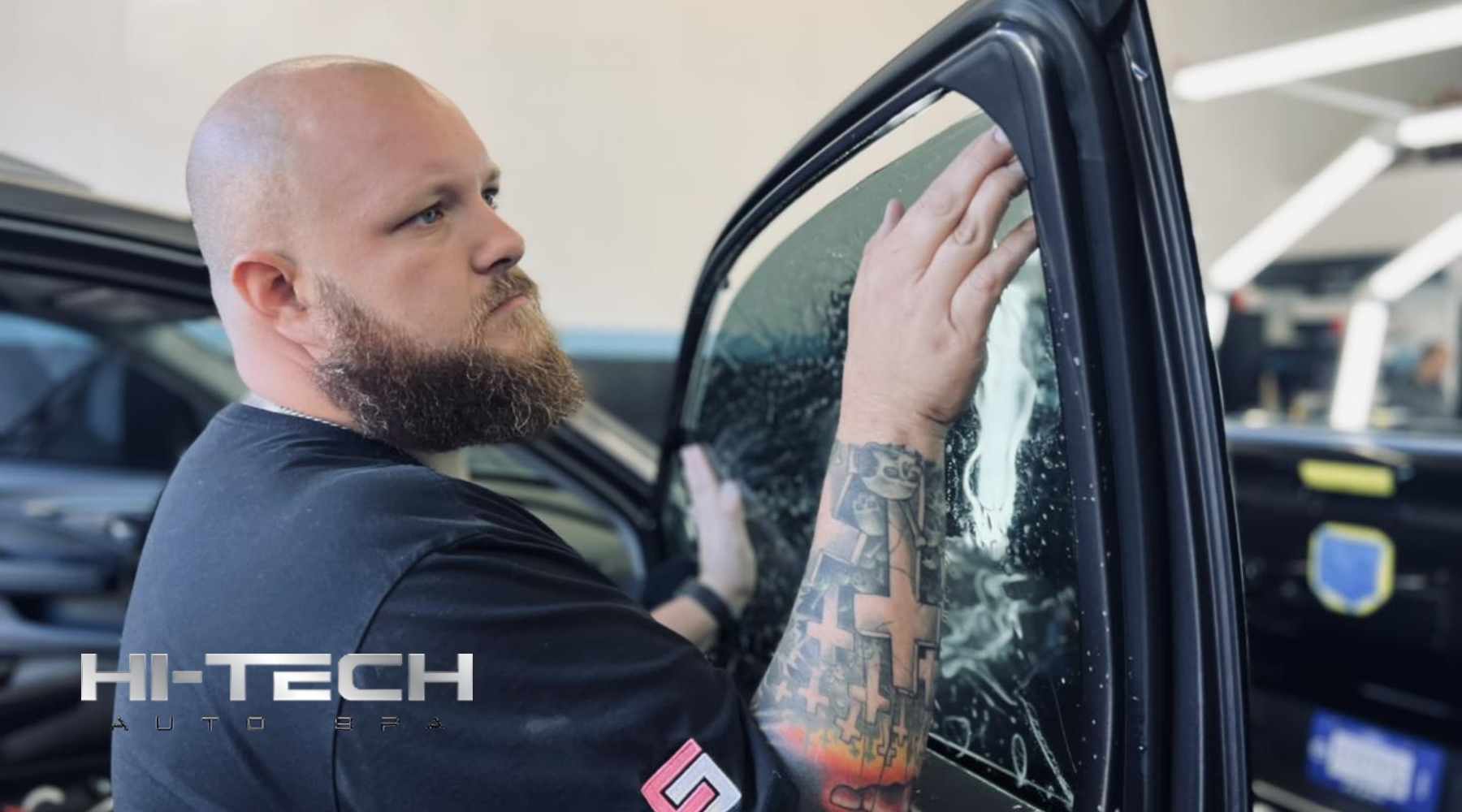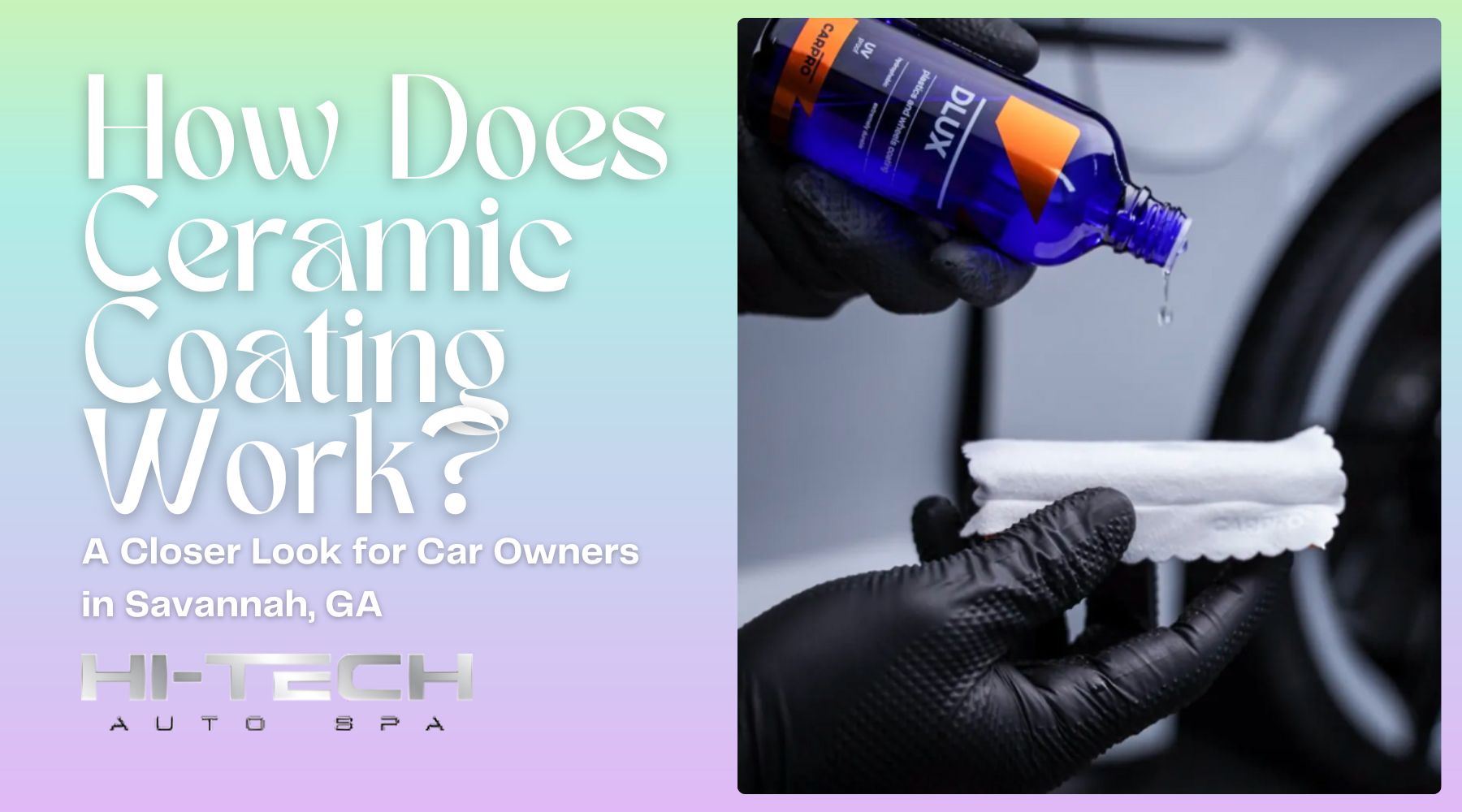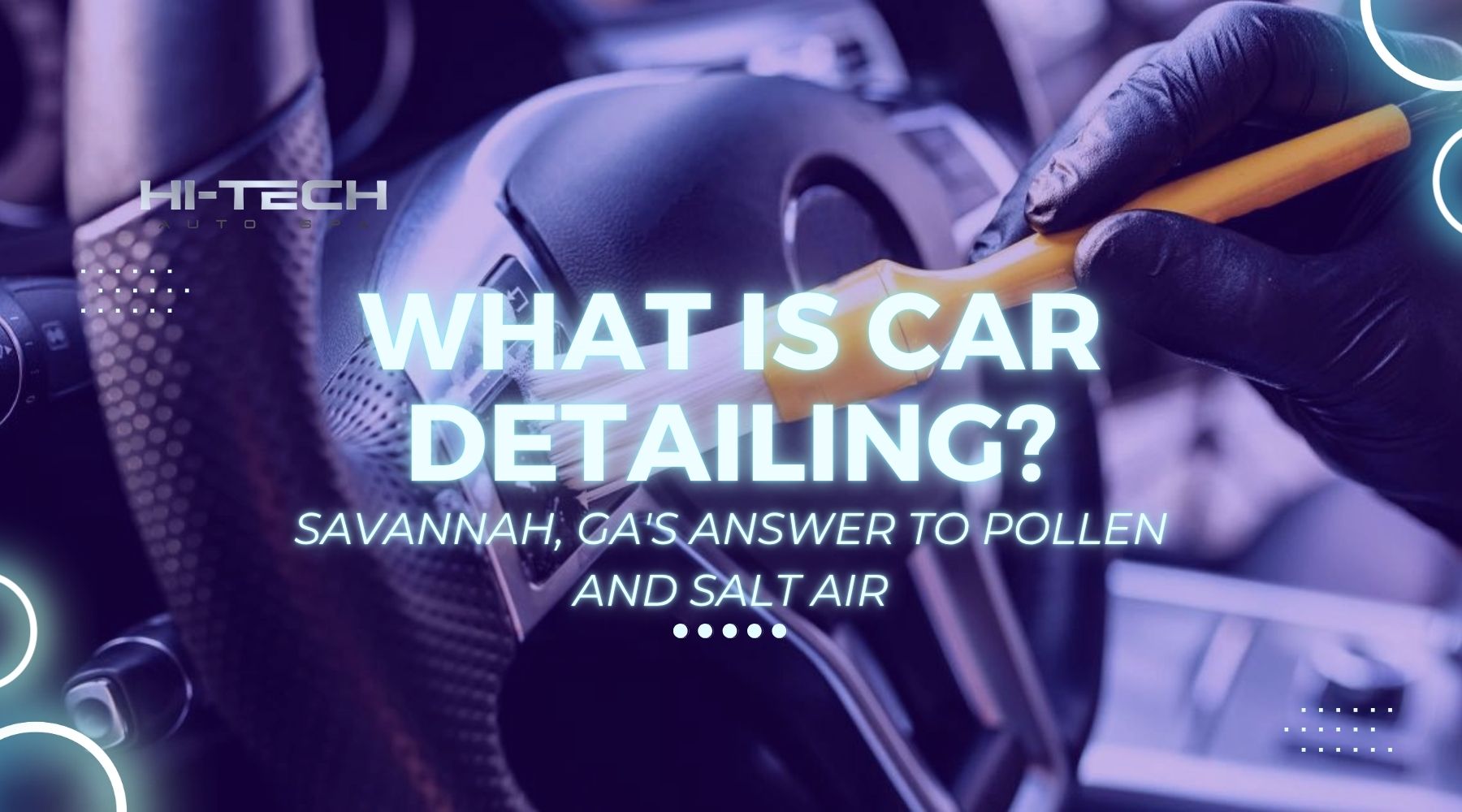If you’re a car owner in Savannah, GA, you already know what the summer can do to your vehicle: relentless UV rays, salty coastal air, bird droppings, and sudden downpours. That’s why ceramic coating has become the go-to protection solution. But before investing, it’s worth asking, What is ceramic coating made of?
Understanding the ingredients in ceramic coatings can help you appreciate their performance, durability, and why they’re ideal for Savannah’s summer climate. Let’s dive into the science behind this revolutionary paint protection solution and how it keeps your car gleaming all season long.
Why Composition Matters: Protection Tailored for Savannah's Climate
Ceramic coatings are engineered to thrive in harsh environments, making them ideal for the intense sun, humidity, and coastal conditions of Savannah, GA. Unlike waxes or sealants that degrade quickly in heat, ceramic coatings bond at the molecular level to your car’s clear coat, creating a resilient, long-lasting shield.

Here’s why this matters:
- UV resistance: Ingredients like titanium dioxide (TiO₂) reflect harmful UV rays, protecting your paint from oxidation, fading, and dulling caused by relentless sunlight.
- Hydrophobic finish: The silicon dioxide (SiO₂) and polymer blend repels water, mud, and grime. After a summer storm, water beads and rolls off, minimizing water spots and streaks.
- Durability: The combination of nano-ceramic particles, PDMS polymers, and silicone-based resins enables the coating to withstand extreme temperatures, bird droppings, tree sap, and even salty sea air, which is common in coastal areas like Savannah.
- Chemical resistance: Ceramic coatings resist acidic contaminants and environmental fallout, keeping your paint protected from etching and staining.
Understanding the science behind the ingredients reveals why nano-ceramic car protection is a smart investment, especially when applied by trained professionals at Hi-Tech Auto Spa, where every application is performed in a climate-controlled setting for optimal performance.
The Core Ingredients of Ceramic Coating
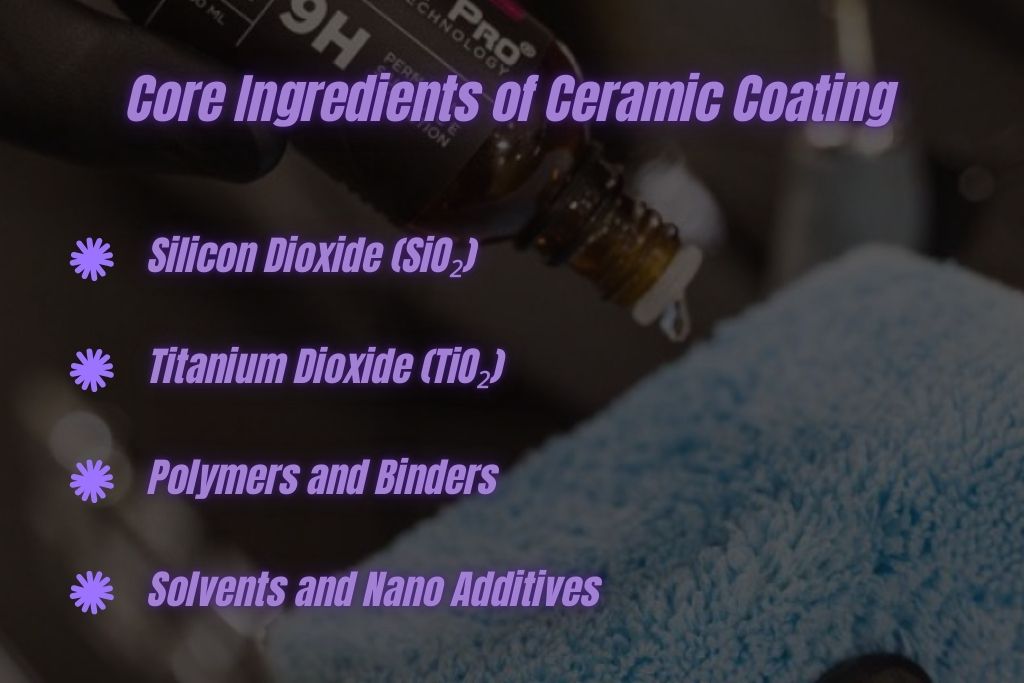
Silicon Dioxide (SiO₂) – The Foundation of Protection
Silicon dioxide, or SiO₂, is the most vital component in ceramic coatings. Sourced from natural quartz or sand, this compound cures into a glass-like shield over your car’s paint. It’s primarily responsible for:
- Durability against minor abrasions and environmental wear
- Scratch resistance from road debris and brushes
- Hydrophobic surface that repels water, mud, and grime
- Chemical bonding with your vehicle’s clear coat for long-term adhesion
In high-quality coatings, SiO₂ concentrations can range from 70% to 90%, directly impacting performance and longevity.
💡 Why is silicon dioxide a primary component in ceramic coatings?
It forms a tough, transparent shield that resists UV damage, scratches, and water-based contaminants, making it ideal for Savannah’s coastal climate.
Titanium Dioxide (TiO₂) – The Gloss & UV Shield
Often added to complement SiO₂, titanium dioxide enhances the coating’s resistance to ultraviolet radiation and boosts reflectivity, giving your car a deep, glossy finish.
Its benefits include:
- Powerful UV filtration to prevent sun-related paint damage
- Color retention over time, especially on darker vehicles
- Improved chemical stability in high-heat environments
🌞 Why does titanium dioxide help preserve a car’s shine?
It reflects UV rays and adds brilliance to the surface, maintaining the vehicle’s color vibrancy, even through Savannah’s intense summer sun.
Polymers and Binders – Flexible Strength with Polysiloxanes & PDMS
The strength of ceramic coatings comes not only from hardness but also from flexibility. Silicone-based polymers like polysiloxanes and polydimethylsiloxane (PDMS) play a critical role by:
- Acting as binders that help the coating adhere to curved surfaces
- Adding elasticity to prevent cracking from temperature fluctuations
- Enhancing the hydrophobic effect, causing contaminants to slide off with ease
💧 Why do polymers like PDMS improve hydrophobic performance?
They create a slick, low-friction surface that resists water and oil, helping maintain a cleaner finish between washes.
Solvents and Nano Additives – Precision Application
To ensure smooth application and uniform coverage, ceramic coatings contain:
- Solvents that dissolve ingredients and allow the product to spread evenly
- Nano-particles that fill in microscopic imperfections, improving clarity and bonding
- Reinforcing additives like zirconium oxide or synthetic nano-diamonds that increase hardness, clarity, and resistance to abrasion
Once applied, the solvents evaporate during curing, leaving behind a dense, crystalline ceramic layer that’s ready to protect your vehicle for years.
How Ceramic Coating Ingredients Perform in Savannah's Summer
Savannah drivers face a unique mix of challenges, oppressive humidity, coastal salt air, blazing UV rays, and a barrage of natural contaminants. Thanks to its specialized ingredients, ceramic coating delivers protection that’s tailored to these conditions.
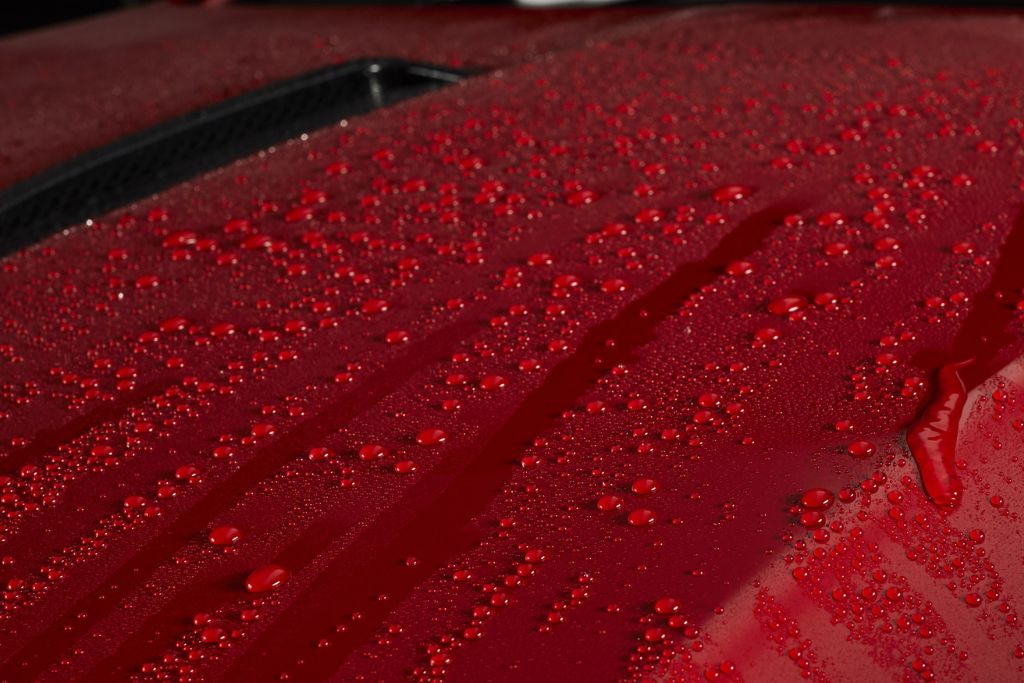
Hydrophobic Finish for Rainy Days
Summer in the South means frequent rain and sticky humidity. The glass-like finish created by SiO₂ and PDMS polymers repels water on contact. This not only helps rainwater bead and roll off but also reduces the buildup of grime, mud, and pollen, common in Savannah’s tree-lined streets. Less residue means fewer water spots, less corrosion, and less frequent washing.
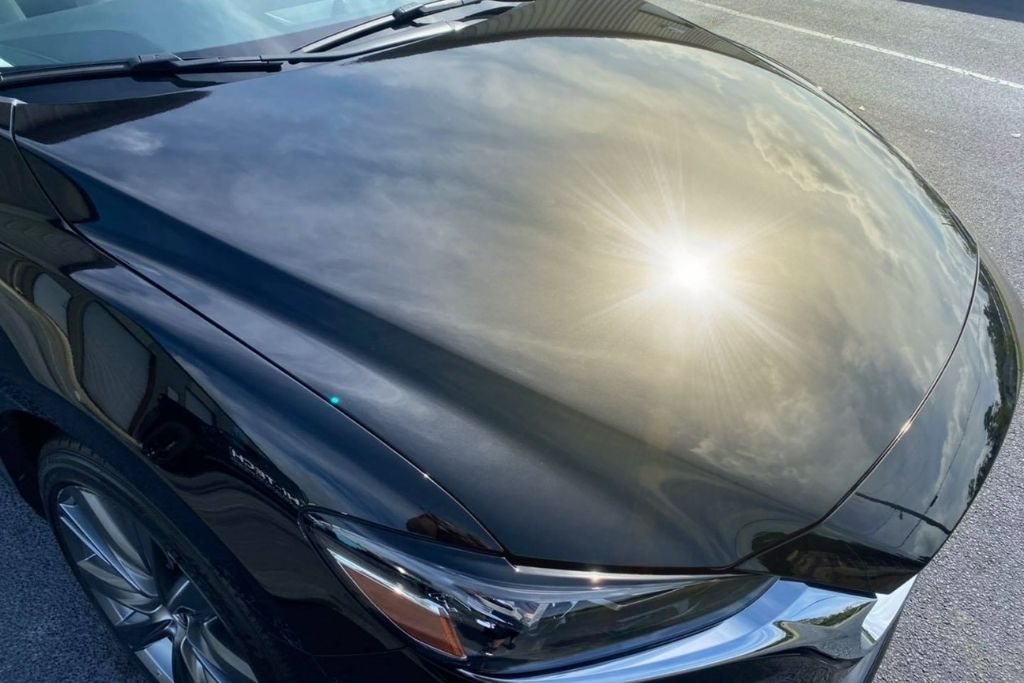
UV Resistance for Coastal Sunshine
Titanium dioxide (TiO₂) acts as a sunblock for your vehicle, absorbing and deflecting UV rays that would otherwise cause your paint to oxidize and fade. Combined with SiO₂’s transparent protective layer, this UV defense is crucial in Savannah’s near-constant sunshine and prevents your paint from dulling or discoloring over time.
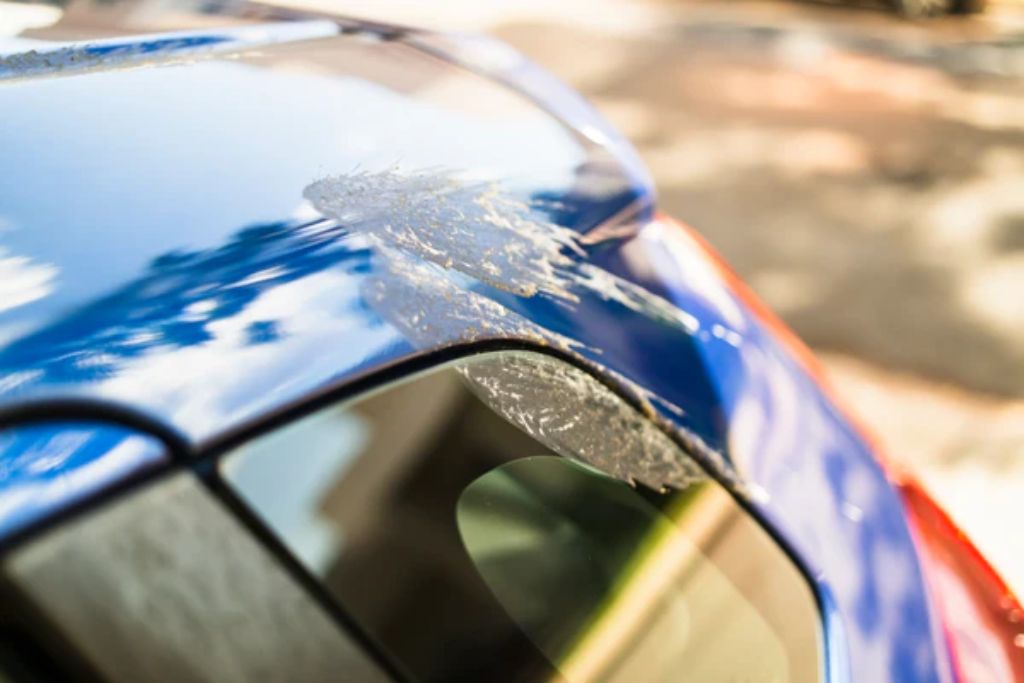
Long-Term Durability Compared to Wax or Sealants
Ceramic coatings outperform wax and sealants by bonding chemically to the clear coat. While wax melts away under the Georgia sun and needs monthly reapplication, ceramic coatings resist:
- Bird droppings – acidic but neutralized by the barrier
- Tree sap – common in Savannah’s shaded streets
- Bug splatter – especially during humid nights
- Industrial fallout – a concern in urban areas
❓ Why is a nano‑ceramic layer more durable than wax or sealant?
Because it cures into a hard, semi-permanent shield that doesn’t wash away, melt, or degrade quickly, it is ideal for Savannah’s demanding environment.
Real Protection, Backed by Real Expertise
At Hi-Tech Auto Spa, ceramic coatings aren’t just applied; they’re engineered with precision. With over 20 years of hands-on experience, our certified technicians understand how to match the science of ceramic coatings to the realities of Savannah’s harsh summer climate.
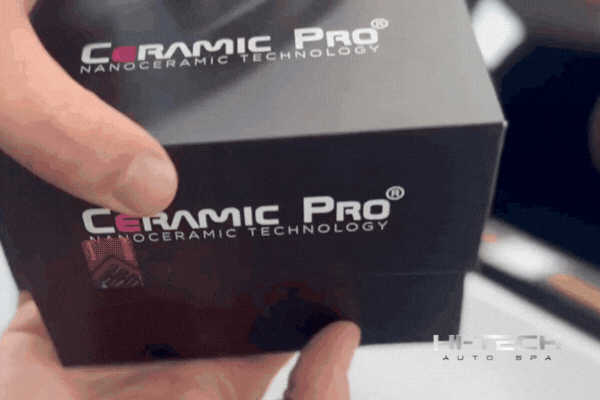
Working inside our state-of-the-art, climate-controlled facility, we exclusively use CARPRO’s D.QUARTZ and C.QUARTZ coatings, renowned for their high SiO₂ content and advanced nano-technology. These products offer:
- Enhanced surface hardness to help resist micro-marring and light abrasion from everyday driving
- UV defense to prevent paint fading in Savannah’s blazing sun
- Hydrophobic properties for effortless cleaning and water resistance
- CARFAX-verified warranties that protect your vehicle’s resale value
Our process includes thorough paint correction and surface preparation to eliminate swirls, scratches, and oxidation, ensuring a flawless finish and maximum adhesion before applying the coating.
🔧 Want to understand how ceramic coating works from prep to finish?
Learn how ceramic coating works in our step-by-step guide.
Savannah-Specific Summer Care Tips
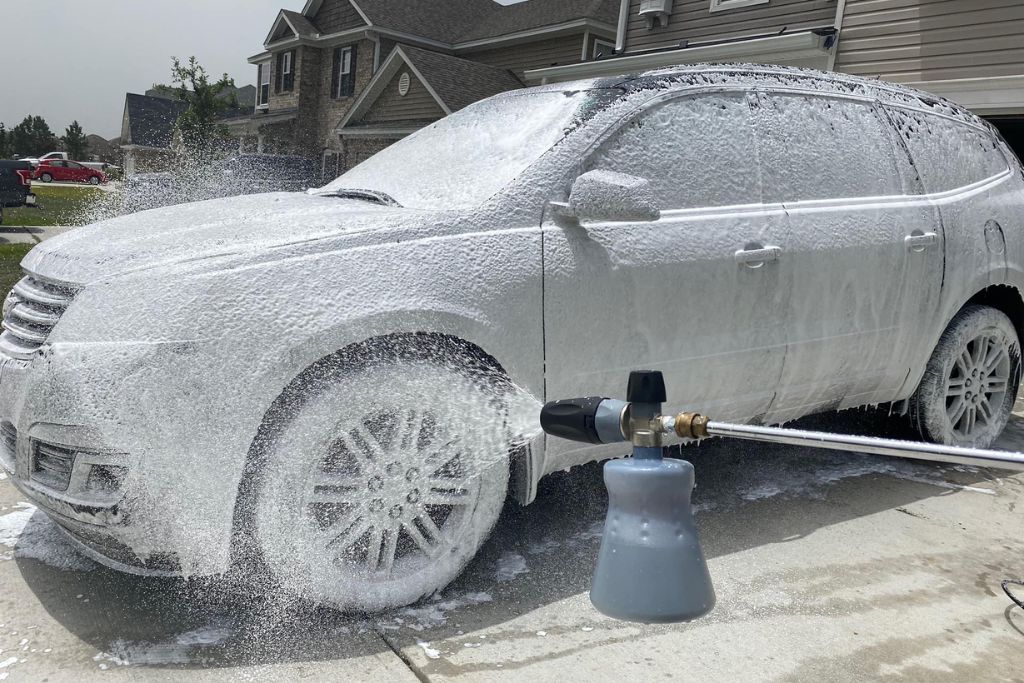
Even the best ceramic coating needs proper maintenance, especially in a place like Savannah, where high heat, salty air, and daily storms can challenge any finish. Here’s how to keep your ceramic-coated vehicle looking its best:
- Wash every 2–3 weeks: Use the two-bucket method and a soft microfiber mitt to avoid scratching the coating.
- Use pH-neutral shampoos: Harsh soaps can degrade the coating’s hydrophobic layer, compromising its effectiveness. Stick to ceramic-safe wash products.
- Avoid automatic car washes: Brushes can cause micro-scratches and strip away protective layers. Touchless is better, but handwashing is best.
- Park in shaded or covered areas: This helps reduce UV exposure and prevents contaminants, such as bird droppings or tree sap, from baking onto the surface.
- Use a ceramic topper spray if desired: These sprays can refresh gloss, enhance water beading, and extend the lifespan of the coating.
❓ Can you wax a ceramic-coated car?
Technically, yes, but it’s not recommended. Traditional waxes won’t bond properly and can even dull the finish. Instead, use a ceramic-specific topper designed to maintain hydrophobicity and shine.
🎥 See Us in Action: Want to watch our process firsthand? Check out our behind-the-scenes installation video and see what quality craftsmanship looks like:
Watch on YouTube or click below to play.
What Is Ceramic Coating Made Of, and Why It Matters?
Now that you understand what ceramic coating is made of, it’s easy to see how each ingredient, from SiO₂ to PDMS polymers, plays a vital role in protecting your vehicle from UV rays, humidity, and everyday wear.
In a climate like Savannah’s, that protection matters. At Hi-Tech Auto Spa, our expert team applies CARPRO coatings with precision and care, ensuring your vehicle stays glossy, guarded, and ready for the road.
For long-lasting shine and peace of mind, trust the local pros who know ceramic coating inside and out.
FAQs: What Car Owners Are Asking
Does ceramic coating protect against bird poop?
Yes! While it won’t make your car invincible, the SiO₂ layer prevents acidic contaminants from bonding directly to the paint, giving you time to clean up without damage.
What is the downside to ceramic coating?
- Not scratch-proof
- Higher upfront cost
- Needs proper maintenance
That’s why a professional application from a trusted shop like Hi-Tech Auto Spa is essential.
How long does a ceramic coating last?
With proper care, anywhere from 2 to 7 years, depending on the package and product used.
How much does a 7-year ceramic coating cost?
Prices vary depending on vehicle size and the level of preparation required. Contact Hi-Tech Auto Spa for a custom quote.
Can you pressure wash a ceramic-coated car?
Yes, if done gently. Use a foam cannon and a soft rinse; avoid harsh chemicals and aggressive brushes.
What destroys ceramic coating?
- Abrasive cleaners
- Harsh chemicals
- Improper washing
Following the do’s and don’ts is key. Explore our complete guide to ceramic coating.
Hi-Tech Auto Spa
5.0 
Window tinting service in Garden City, Georgia
Address:
1335 Lynah Ave #114, Savannah, GA 31408, United States
Phone:
+1 912-239-4160
Reviews:
Google review summary

